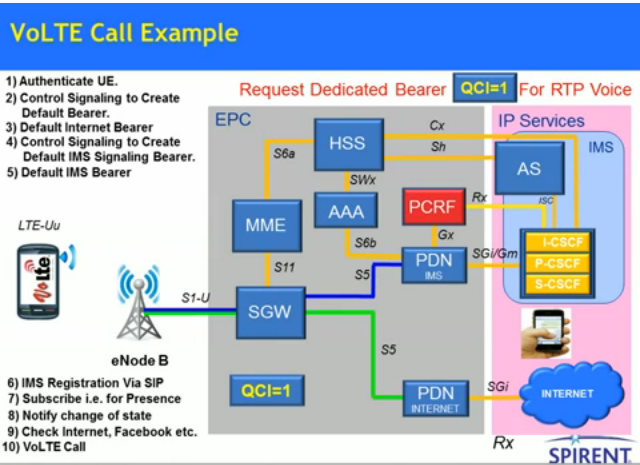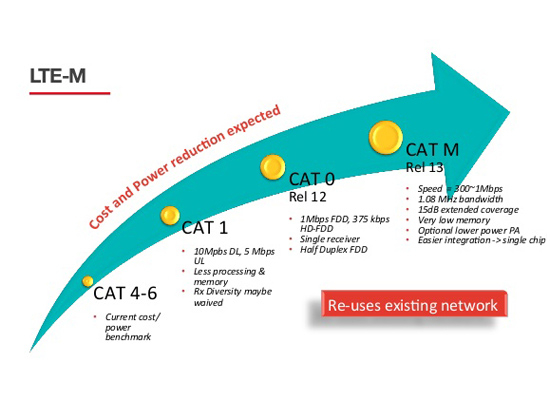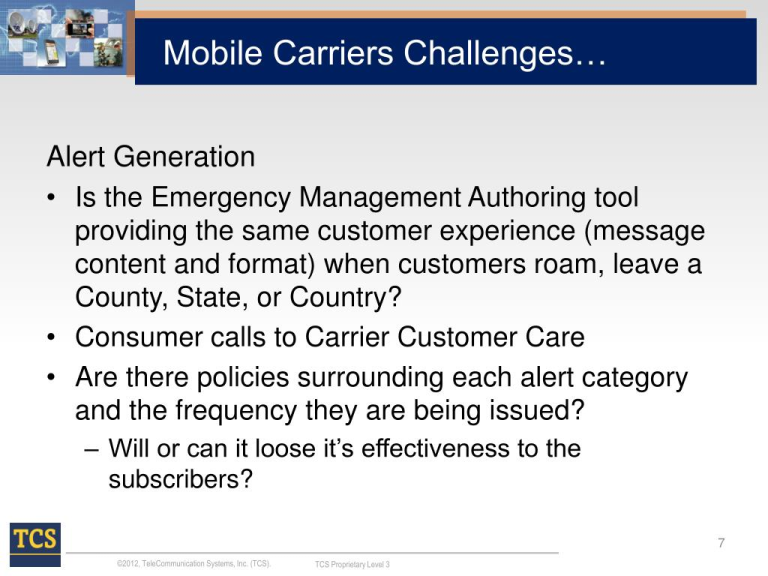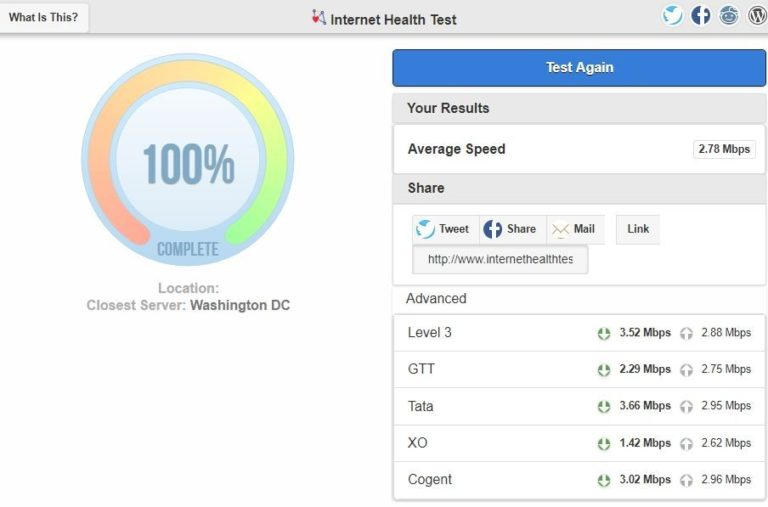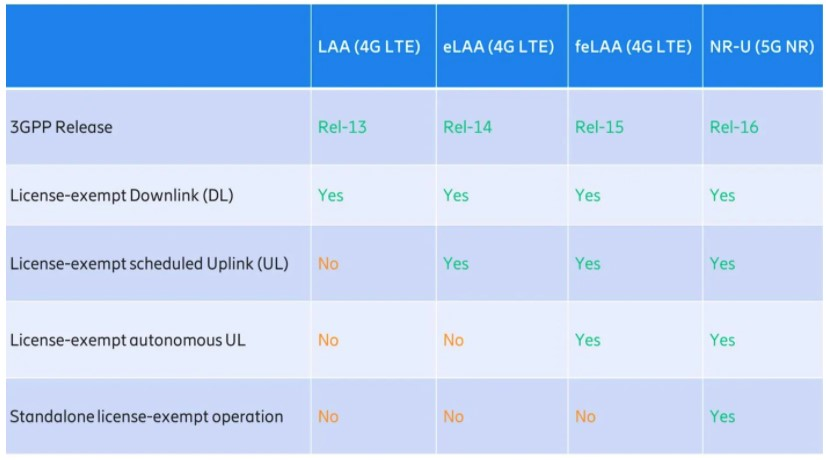
LTE-U technology, which stands for LTE unlicensed, represents a revolutionary approach in the wireless communications landscape by enabling carriers to utilize the 5GHz spectrum commonly occupied by Wi-Fi networks. This innovative solution proposed by Qualcomm is designed to enhance network efficiency without encroaching on licensed frequencies, reflecting a significant shift in how mobile data services can coexist with unlicensed spectrum. As demand for mobile data surges, the ability of LTE-U to create smaller, localized cells aims to ease congestion and optimize overall connectivity for users. Advocates of LTE-U argue that, rather than detracting from Wi-Fi performance, it could potentially improve it by alleviating congestion on licensed bands. Despite concerns from consumer advocates regarding potential impacts on Wi-Fi performance, Qualcomm emphasizes that effective coexistence mechanisms are in place, ensuring fair sharing of the spectrum that belongs to everyone.
Introducing the concept of LTE-U technology, also known as LTE unlicensed, brings to light a compelling innovation that allows cellular providers to tap into the same frequencies utilized by Wi-Fi, specifically the 5GHz band. This advancement falls under the broader category of license-assisted access (LAA), aimed at enhancing the overall performance of wireless networks in congested areas. As the need for robust Wi-Fi and mobile data services continues to escalate, leveraging the unlicensed spectrum could prove pivotal in managing increasing data demands effectively. Proponents argue that this technology will not only streamline wireless communication but also coexist harmoniously with existing Wi-Fi infrastructures. By employing methods designed for compatibility, LTE-U could usher in an era of improved network efficiency and user satisfaction across the mobile landscape.
Understanding LTE-U Technology and Its Benefits
LTE-U technology, or LTE unlicensed, represents a significant innovation in wireless communication, enabling cellular carriers to utilize unlicensed 5GHz frequencies traditionally reserved for Wi-Fi. This capability allows for increased network capacity and efficiency as mobile providers can share the spectrum without infringing upon existing users. By employing LTE-U, carriers enhance their coverage in densely populated areas, addressing the surging data demands from consumers. With the anticipated rollout, users can expect better connectivity without the worry of interference typically associated with overlapping wireless signals.
Moreover, Qualcomm’s emphasis on sharing the spectrum responsibly highlights the potential for collaborative coexistence between LTE-U and Wi-Fi networks. As Qualcomm claims, by integrating LTE-U technology, the overall system becomes more efficient, which is crucial in today’s mobile landscape where data consumption is burgeoning. This technological advancement promises to alleviate the pressure on licensed spectrum by utilizing the unlicensed 5GHz spectrum, thereby improving user experience across various applications—from streaming services to video conferencing.
Impact of LTE-U on Wi-Fi Performance
While proponents of LTE-U tout its benefits, there remains a significant debate regarding its impact on Wi-Fi performance. Critics argue that the introduction of LTE-U technology into the 5GHz spectrum could lead to degradation of existing Wi-Fi services. With many households and businesses relying heavily on Wi-Fi connectivity, the fear is that increased LTE activity might disrupt their seamless experience. Qualcomm, however, asserts that LTE-U has been engineered with coexistence in mind, utilizing a protocol designed to minimize interference with Wi-Fi networks.
Qualcomm’s studies indicate that by employing intelligence in its technology, LTE-U can dynamically adjust its operation based on the presence of Wi-Fi signals. This means that rather than overpowering or interfering, LTE-U can coexist alongside unlicensed spectrum users, ultimately enhancing network performance without compromising the integrity of Wi-Fi connections. Therefore, the real challenge lies in reassuring consumers and stakeholders that LTE-U can operate harmoniously with existing Wi-Fi infrastructure, ensuring that everyone can enjoy robust connectivity.
The Role of Licenses in Unlicensed Spectrum
The use of unlicensed spectrum, such as the 5GHz band, poses unique challenges and opportunities within the telecommunications landscape. As Neville Meijers from Qualcomm pointed out, the unlicensed spectrum does not belong to a single entity—its open nature allows various users, from retail establishments to individual consumers, to utilize these frequencies for their needs. This shared environment fosters competition and innovation but also raises concerns about potential monopolization by larger carriers through technologies like LTE-U.
With the introduction of LTE-U, wireless carriers assert their right to participate in the unlicensed spectrum, which may lead to controversial discussions regarding equitable access. The FCC’s recognition of the need for a comprehensive framework to protect existing users suggests a delicate balance that must be struck to ensure that innovation does not come at the expense of current unlicensed spectrum users. It is crucial for all parties involved to engage in ongoing dialogue to establish clear guidelines that promote fair use while leveraging the advantages of LTE-U technology.
Qualcomm’s Commitment to Coexistence in Wireless Networks
Qualcomm stands at the forefront of the LTE-U revolution, advocating for a technologically advanced future where carriers can effectively share the unlicensed spectrum alongside traditional Wi-Fi users. The company’s commitment to ensuring coexistence is bolstered by rigorous studies demonstrating LTE-U’s capability to function without disrupting the existing Wi-Fi landscape. By working closely with stakeholders, including service providers and consumer advocates, Qualcomm seeks to address concerns while paving the way for enhanced wireless experiences.
In a world increasingly reliant on mobile connectivity, Qualcomm emphasizes the importance of collaboration in the adoption of LTE-U technology. The company understands that potential backlash from consumers and businesses must be mitigated through transparent communication and reliable performance. By providing evidence of LTE-U’s minimal impact on Wi-Fi performance and actively engaging in discussions surrounding best practices, Qualcomm is not only positioning itself as a leader in mobile technology but also as a responsible steward of shared communications resources.
FCC’s Role and Future Considerations for LTE-U
The Federal Communications Commission (FCC) plays a pivotal role in determining the future landscape of LTE-U and its interaction with unlicensed spectrum usage. With increasing concern from various stakeholders about the potential degradation of Wi-Fi services, the FCC’s involvement could shape regulations that govern how LTE-U is implemented across the country. The emphasis placed by Chairman Tom Wheeler on developing comprehensive standards suggests that the sector is in a critical period of adaptation where policies can encourage innovation while protecting existing users.
As the industry moves forward with the rollout of LTE-U capabilities by major carriers like Verizon and T-Mobile, it will be essential for the FCC to establish clear guidelines that foster a competitive environment. Ensuring that LTE-U technology operates within a framework that safeguards Wi-Fi performance will be paramount in maintaining consumer trust and promoting the continued growth of both technologies. As new research and independent studies emerge, stakeholders will need to remain vigilant, adapting their approaches to ensure that the wireless ecosystem evolves in a balanced and equitable manner.
Consumer Awareness and Education on LTE-U
As LTE-U technology begins to roll out, consumer awareness and education will be crucial. Many users may not fully understand what LTE-U is or how it could impact their current Wi-Fi experiences. To alleviate concerns stemming from misinformation or misunderstanding about the technology, comprehensive educational initiatives are needed. By clearly articulating the benefits and operational details of LTE-U, consumers can feel more secure about the integration of this technology into their daily lives.
Companies like Qualcomm can play a significant role in these educational efforts by providing transparent information, deploying outreach campaigns, and actively participating in community discussions. By ensuring that consumers are well-informed about LTE-U and its workings, the industry can foster a more positive reception and pave the way for smoother integration of LTE technology into existing infrastructures. Ultimately, awareness will empower users to embrace LTE-U innovations while remaining confident in their available networking options.
Comparing LTE-U with Other Wireless Technologies
When discussing wireless technologies, it is essential to compare LTE-U with other existing standards. LTE-U operates within the unlicensed spectrum, which differentiates it from traditional LTE that relies on licensed frequencies. This distinction is crucial, as LTE-U aims to alleviate pressure on licensed spectrum by efficiently utilizing the 5GHz band, predominantly used for Wi-Fi. This could lead to a more competitive landscape, where consumers benefit from improved service without compromising Wi-Fi performance.
Moreover, emerging technologies like License-Assisted Access (LAA) complement LTE-U by offering another means of integrating unlicensed spectrum into mobile networks. Understanding how these technologies interact and coexist will be essential for consumers and industry players alike. By analyzing these comparisons, stakeholders can better anticipate the implications of LTE-U on their existing wireless setups, helping them make informed decisions that best fit their connectivity needs.
Challenges Facing LTE-U Deployment
Despite the promising advancements offered by LTE-U technology, several challenges lie ahead for its deployment and acceptance. Primarily, there are concerns regarding the potential conflicts that could arise when LTE-U starts operating in the same 5GHz frequencies used by countless Wi-Fi devices. Ensuring sufficient protection for existing Wi-Fi users will be paramount for the successful integration of LTE-U into the broader wireless ecosystem.
Additionally, there may be pushback from consumer advocates and smaller business owners who fear being overshadowed by larger carriers. Addressing these concerns transparently and proactively will help build trust among stakeholders, promoting a more seamless transition towards LTE-U technology. The wireless industry must remain vigilant and responsive to the challenges that come with technological adaptation, ensuring that progress happens without negatively affecting existing users.
Looking Ahead: The Future of LTE-U and Wireless Innovation
The future of LTE-U is intertwined with the evolution of wireless technology as consumer demand for data continues to escalate. With devices becoming more interconnected and reliant on high-speed internet connectivity, LTE-U could emerge as a vital component in providing the necessary network capabilities to support this digital expansion. As companies like Qualcomm drive innovation, users can expect enhancements in not only mobile connectivity but overall system efficiency.
The ongoing development of LTE-U is indicative of an industry adapting to the growing needs of consumers for better performance and capacity. As research, implementation, and regulatory measures evolve, the wireless landscape will be shaped by both technological advancements and consumer feedback. Aligning these factors will be pivotal in creating a harmonious relationship between LTE-U and existing wireless technologies, ensuring that future innovations continue to provide valuable solutions without compromising user experiences.
Frequently Asked Questions
What is LTE-U technology and how does it use unlicensed spectrum?
LTE-U technology, or LTE unlicensed, is a wireless communication standard that permits mobile carriers to utilize the 5GHz spectrum, which is also used by Wi-Fi networks. By sharing this unlicensed spectrum, LTE-U aims to enhance network efficiency while improving overall service for users without compromising existing Wi-Fi performance.
How does Qualcomm LTE-U impact Wi-Fi performance?
Qualcomm LTE-U aims to coexist with Wi-Fi networks rather than degrade their performance. According to Qualcomm’s senior vice president, LTE-U has been designed to share the spectrum fairly, ensuring that it does not interfere with Wi-Fi connections, thereby optimizing both LTE and Wi-Fi experiences for users.
What are the concerns surrounding the deployment of LTE-U in the 5GHz spectrum?
Despite assurances from Qualcomm and major carriers about LTE-U technology’s coexisting with Wi-Fi, consumer advocates have expressed concerns that LTE-U may lead to degraded Wi-Fi performance and potential anti-competitive behavior. The debate continues on how effectively LTE-U can share the unlicensed spectrum without impacting existing users.
Will LTE-U technology increase competition in the mobile network space?
LTE-U technology has the potential to increase competition among mobile carriers by facilitating better access to unlicensed spectrum like the 5GHz band. This could enable carriers to offload some traffic from their licensed spectrum, improving service quality and reducing congestion during peak usage times.
What makes LTE-U different from traditional LTE technology?
Unlike traditional LTE, which operates solely on licensed frequencies, LTE-U technology utilizes both licensed and unlicensed spectrum, specifically the 5GHz band. This dual-access approach allows for more efficient network use and can help alleviate congestion on licensed networks.
What studies support the effectiveness of LTE-U technology in sharing unlicensed spectrum?
Qualcomm has conducted internal studies demonstrating that LTE-U technology can coexist without disrupting existing Wi-Fi services. They claim these studies show that LTE-U effectively shares the unlicensed spectrum, maintaining a balance that keeps both LTE and Wi-Fi users satisfied.
How quickly are carriers adopting LTE-U technology?
Major carriers like Verizon and T-Mobile are reportedly planning to incorporate LTE-U technology into their network infrastructure as soon as next year, signaling a swift move towards leveraging unlicensed spectrum to enhance mobile data services.
What is the future outlook for LTE-U technology in relation to Wi-Fi networks?
The future of LTE-U technology appears promising, with ongoing developments aimed at ensuring compatibility with Wi-Fi networks. As more carriers explore the integration of LTE-U, the industry anticipates a more efficient spectrum management approach that benefits users without compromising their Wi-Fi experiences.
| Key Point | Description |
|---|---|
| What is LTE-U? | LTE-U stands for LTE unlicensed, a wireless standard that allows carriers to use LTE signals in the 5GHz frequency band shared with Wi-Fi. |
| Purpose of LTE-U | To enable more efficient use of unlicensed spectrum without taking it away from existing users, like Wi-Fi. |
| Carrier Perspective | Qualcomm believes LTE-U will relieve the demand on licensed spectrum by using localized cellular coverage instead of traditional macro-sites. |
| Concerns about LTE-U | Consumer advocates argue LTE-U could degrade Wi-Fi performance and create anti-competitive behavior. |
| Qualcomm’s Assurance | Qualcomm insists that LTE-U will coexist with Wi-Fi without negatively impacting its performance, supported by internal studies. |
| Regulatory Outlook | The FCC has called for a comprehensive standard to protect unlicensed users, but LTE-U plans are moving ahead quickly. |
Summary
LTE-U technology represents a significant advancement in wireless communication, allowing carriers to utilize unlicensed spectrum without detriment to existing Wi-Fi networks. By sharing the 5GHz frequency band, LTE-U aims to improve overall network efficiency in response to increasing data demands. Despite concerns from consumer advocates, Qualcomm asserts that coexistence with Wi-Fi is achievable and beneficial, allowing for a more robust and competitive mobile network environment.
